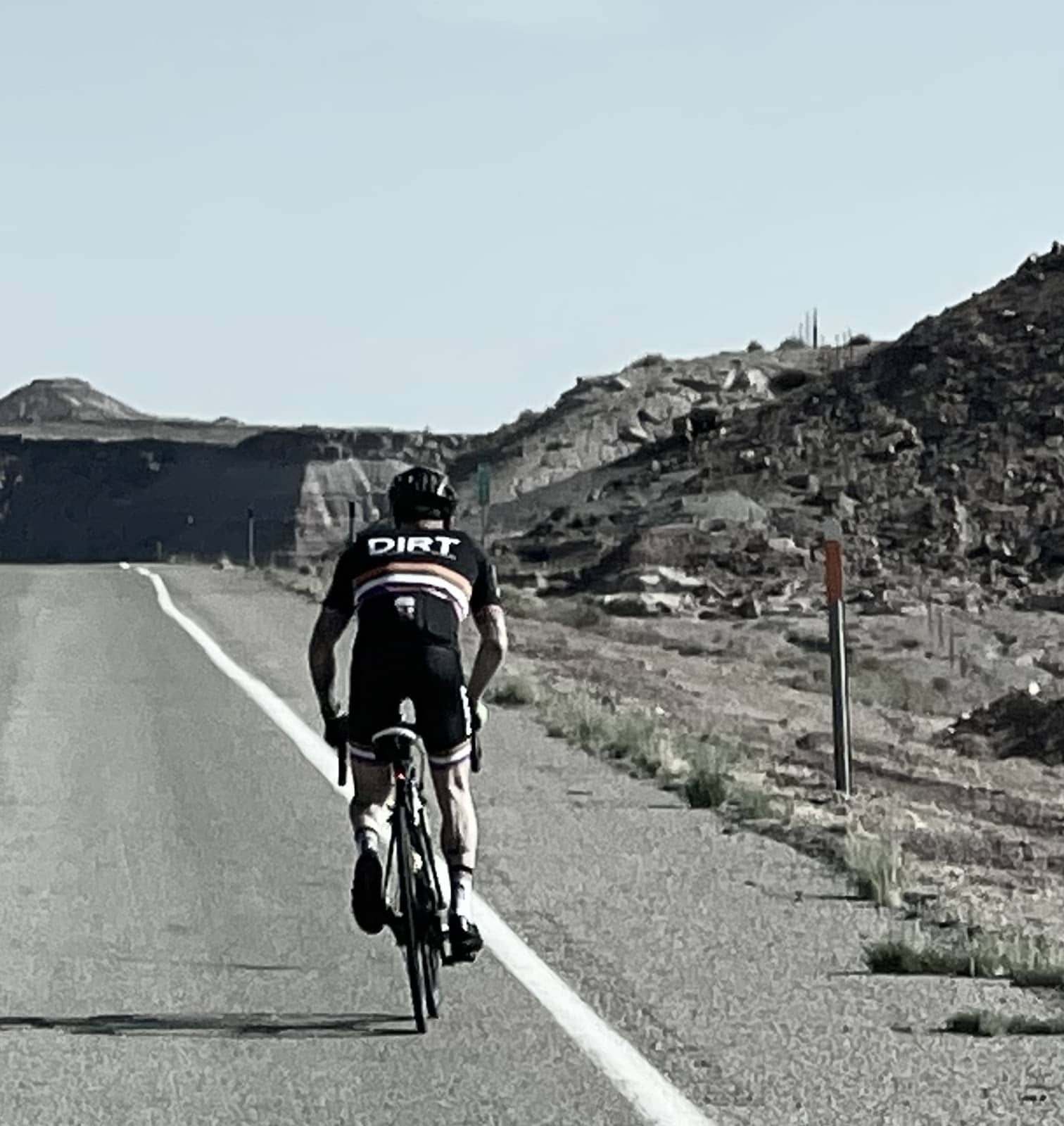An interview with Team Australia and Zwift Team Aero’s elite cyclist Torben Partridge-Madsen.
Tell us a bit about yourself. Where do you live, and what do you do? What do you like to do for fun? Family life, that sort of stuff.
I live in the Australian Capital Territory and work full-time for the Government. For fun (when not bike riding), I enjoy listening to podcasts (Lanterne Rouge Cycling Podcast is the current go-to), reading, and the incredibly satisfying duo of being active outdoors and then being lazy indoors with my fiancée, Gabby.

What is your cycling story? When did you start competing, and what is your racing history? What is your most significant accomplishment racing on the road?
I started mountain biking at a relatively young age. I got into it as my dad was a keen MTBer. I did my first MTB race at 11 and loved it. As I got older, I got a road bike for training and progressed to doing some national-level racing on the road as an under-19.
I stepped back from cycling to buckle down with study for quite a few years, but when my Master’s research project was postponed due to the COVID lockdown in 2020, I found time to get back into it.
I’ve been the Australian Capital Territory road champ for 2021 and 2022. I also got 5th at an MTB national series round as an under-17, although there were only 7 or 8 of us in the race, so not particularly impressive.
What is your virtual cycling story? How and when did you get involved in esports? What is your most significant accomplishment racing virtually?
I got involved in virtual racing in mid to late 2020. COVID restrictions canceled almost all normal road racing, so virtual racing was the place to be if you wanted to get a competitive fix.
Undoubtedly my most significant accomplishment has been racing in the 2022 and 2023 UCI Esports Worlds races. Racing in 2022 as part of the Aus team, where we had Jay Vine win, Freddy Ovett 2nd, and Ben Hill 4th, was an unbelievably cool experience.
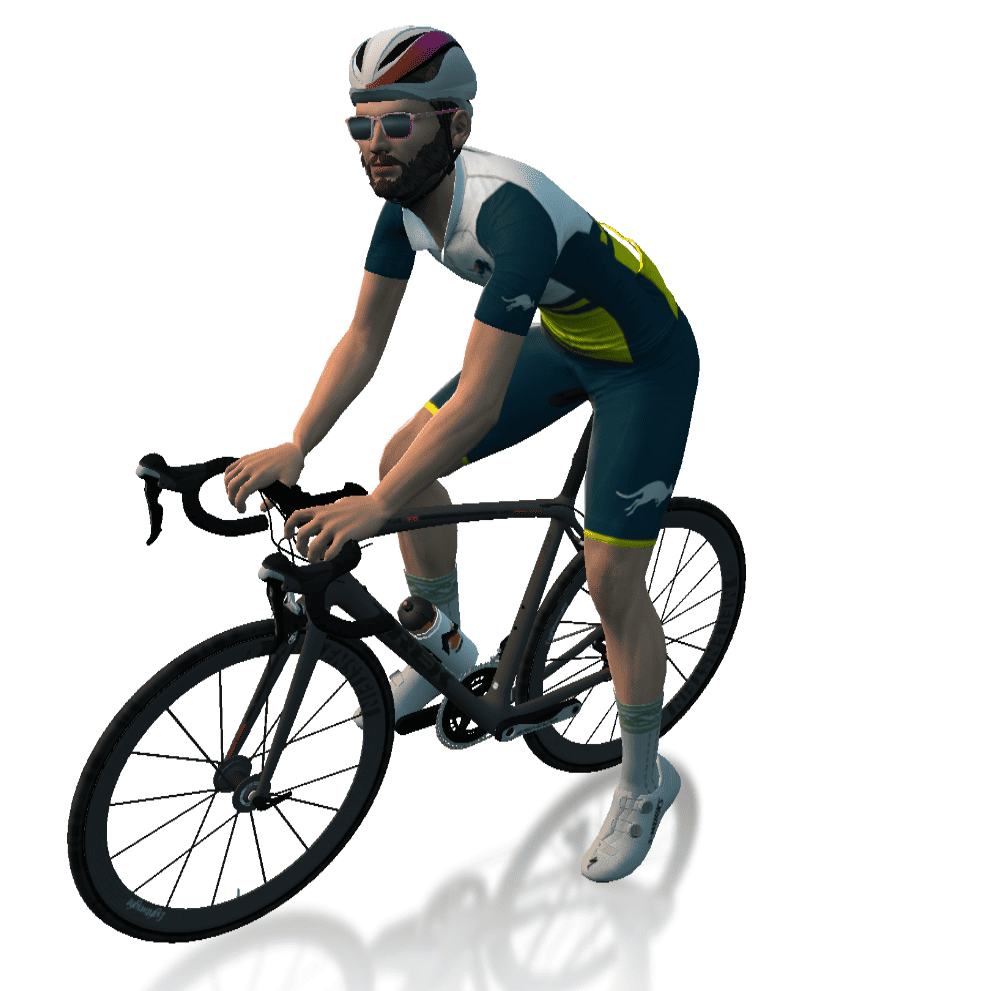
Tell us about your esports team. How has racing with your team prepared you for this moment? Is there anything unique about your team that has contributed to your success?
I’ve been racing with the Australian Esports Racing Organisation (AERO) since the start of 2021. It’s just a great bunch of guys who are all keen to have a hit out and help each other get the best result. The team boss Tully is an absolute legend who is really passionate about esports, but more than anything always is primarily concerned about the riders and ensuring we enjoy the racing.
For a frame of reference, how tall are you, and approximately how much do you weigh in competition? What is your indoor PB for Peak Power, 15-second, 1-minute, 5-minutes, and 20-minutes?
I’m 174cm and typically weigh around 61-62kg.
Peak power: ~1200W
15 second: 1080W
1 minute: 679W
5 minute: 411W
20 minute: 359W
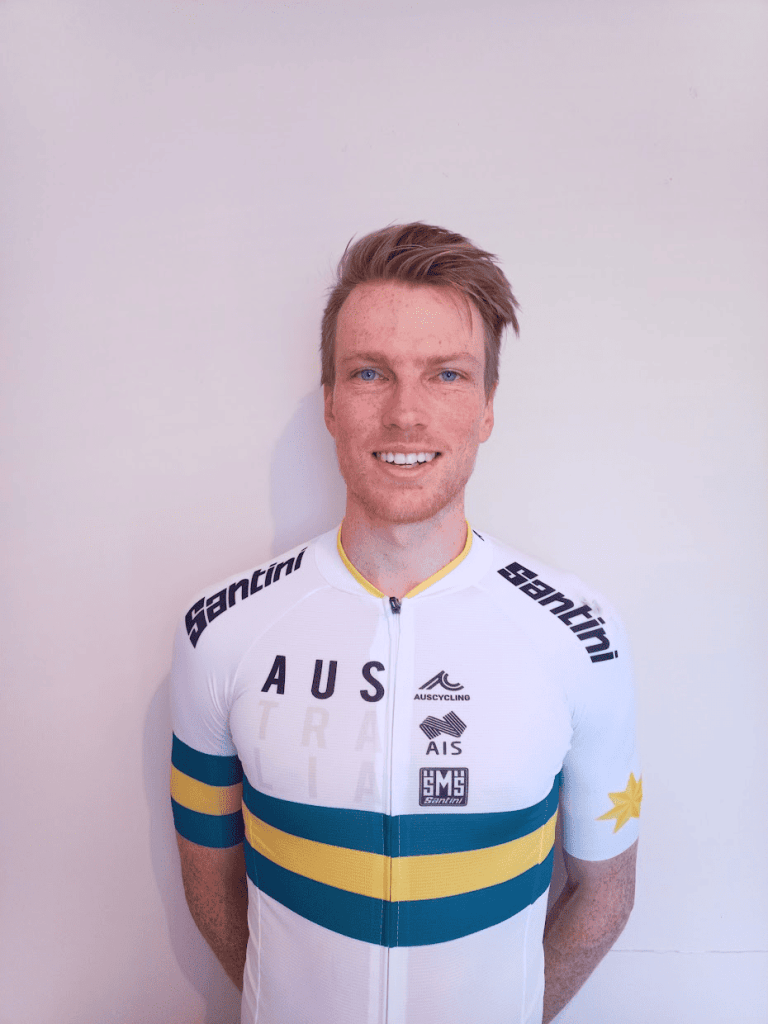
What type of rider are you? Has your riding style evolved as you become more involved and successful in esports?
I think I’m a pretty good example of a Jack of all trades, master of none (although people who’ve ridden with me in a TTT may take issue with me trying to claim any competence whatsoever in that format).
I’ve gone through phases of focusing on improving different aspects of the power curve, usually in specific preparation for a goal race. Still, overall I am pretty similar now to what I’ve always been. I’m maybe better at judging my efforts, although I could still work on it.
For esports, the main focus has been improving my sprint, as so many races are decided by the final 15-second effort. It has been as much about improving my setup (e.g., securing my trainer) as doing sprint training itself. I don’t know whether I should be proud or embarrassed to say that my sprint power on the trainer is as good as or better than it is outside.
What is your go-to training workout, and why do you enjoy it so much? Has your training emphasis and philosophy changed to make you a more successful eracer?
The boring but honest answer is regular, steady endurance riding. Riding on the trainer is excellent for being able to do uninterrupted riding, and I like tuning into a podcast and knocking out k’s on the trainer after work.
A unique workout is one I do in preparation for a domestic race here in Australia. The session is 5×5 minutes at threshold, then doing a Zwift race, such as The Chop.
There might be some rational explanation, but for me, it’s just a really tough session, and it’s a good confidence boost if I can get through without the wheels completely falling off.

What are your short and long-term esport goals? Do they involve becoming the UCI Cycling Esports World Champion? What does that mean to you?
I don’t have any short-term goals for esports other than to dip into races when I’m keen and enjoy competing.
In the long term, I’ll aim to qualify again for the UCI Cycling Esports World Championships in 2024. Being able to represent Australia has undoubtedly been the most incredible opportunity I’ve had through esports cycling, and I want to make the most of the opportunity while I can.
The Australian team is always super strong, so if I get the chance to participate, my ongoing goal is to support teammates and help get the best result for Australia possible. I don’t see myself ever going for the title, and fortunately, we always have riders with much better chances of winning than me, who I can try to help!
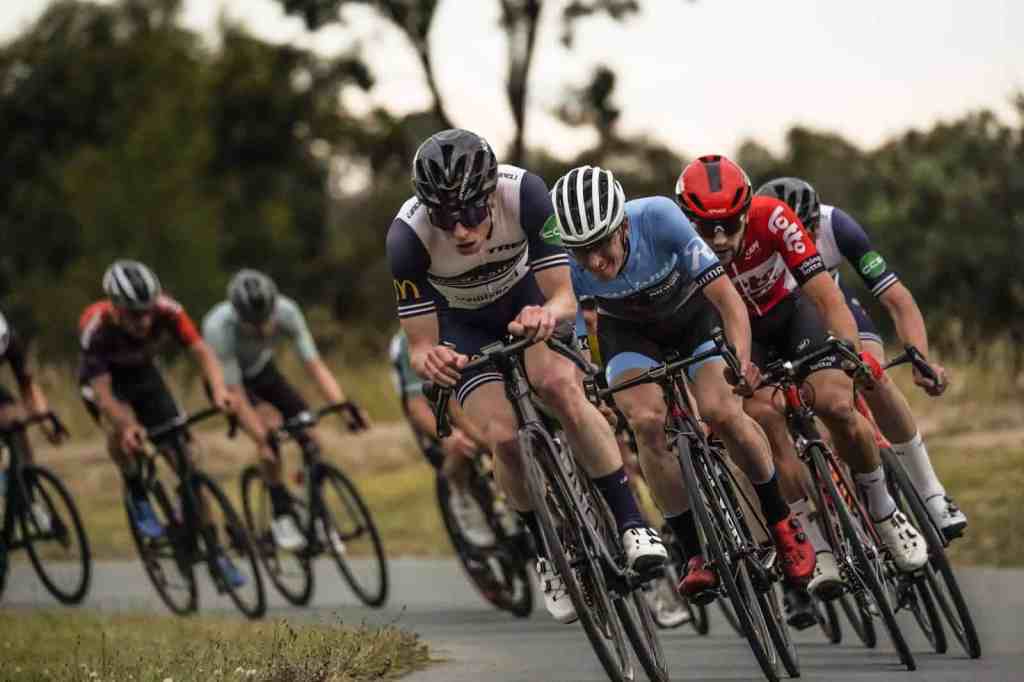
You have accomplished so much in esports. What is it that sets you apart from other virtual athletes?
To be honest, in most races I’ve done at the top level, I feel both impressed and outclassed—the level of competition is exceptionally high, and I often feel behind the eight ball in terms of fitness, riding in the game as optimally as possible, knowing the courses, and so forth.
I’m very fortunate to be able to compete at the top level. I think it’s come from getting into the sport young and building fitness over a long time. Also, the demands of esports cycling suit my skillset quite well.
I’m not good at positioning outside in the bunch, and my durability is average. The short, punchy efforts of esports allow me to get the best out of my abilities/ don’t expose my weaknesses as much!
How much do you factor in the gamification side of esports? Is there a learning curve that you must master? How vital are PowerUps and other things unique to virtual cycling?
It seems clear that simply being a very good cyclist isn’t enough to immediately make someone a good esports cyclist.
However, I’m not sure whether gaming skills are what separates the top eSports cyclists. I’d suggest that in many cases, fitness separates the competitors who are all reasonably competent at the game.
But, to immediately contradict myself, I’ve found my best results are typically those times that I’ve done the most preparation for the race. Being confident to fully commit at the right moment (utilizing the course and powerup optimally), in my experience, is crucial to success when you’re up against competitors at a similar level.
But, at the end of the day, you have to have the power to make it happen.
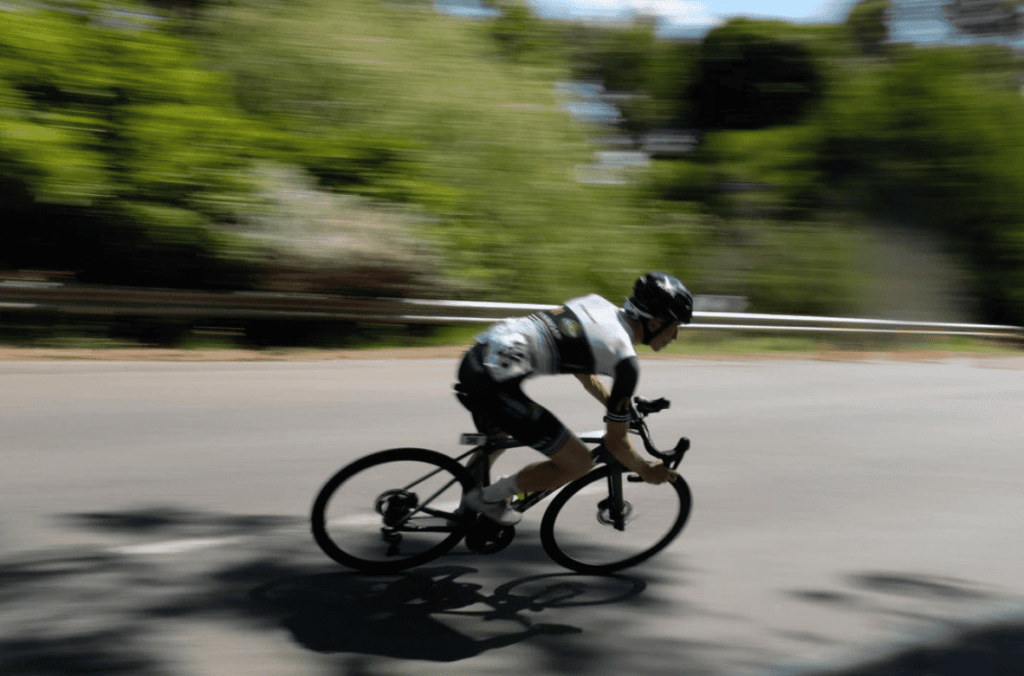
Do you feel cycling esports will ever gain acceptance as a trusted discipline and gain popularity as a unique discipline? What challenges does it face?
Indoor cycling will likely continue as a relevant discipline of cycling.
Whether esports as a racing format continues or grows is still not determined. At face value, it has a lot of advantages—it’s incredibly cheap to run for race organizers. It provides a great depth of competition to be accessible from your garage, which might otherwise require significant travel time and cost.
At a recreational level, the long-term success of racing is likely to depend on whether categorization methods are appropriate for competitive racing and the ability to safeguard against bots, dishonesty (e.g., for weight), and poor quality or poorly calibrated trainers.
The most significant long-term challenge for top-level competition is growing an audience. Typically esports viewership comes from the player base. However, I’d guess that most people using Zwift, RGT, or other platforms are more likely to be watching the Tour than a Zwift Grand Prix race or Esports Worlds. The challenge is first getting people who are already indoor cycling interested, then get interest from the broader cycling world.
Tell us about your setup. Where is it located, and what do you use? What steps do you take to verify your accuracy?
I use a Wahoo Kickr V6, which I put on my Trek Emonda. I use Favero Assioma Duos for dual recording. Choosing reliable equipment is my primary mechanism to ensure accurate esports performance.
My setup is out on the patio. I enjoy being ‘outside’ although there can be downsides, being subject to the weather, and in summer, I am at risk of a bug attack when it gets dark.

Some cynics and detractors don’t trust the legitimacy of esports. What do you say to those who question the integrity and ability for a level playing field between competitors? What challenges does esports face in becoming recognized as a trusted competition venue?
Unfortunately, you don’t have to be a cynic to question the legitimacy of esport cycling performances.
There are a few separate issues. At one extreme, there have been instances where people appear to be significantly stronger than they are, e.g., by manipulating weight or power data. On the other hand, there are differences between trainers, which can make a significant difference, so that the trainer you are on can impact the results you get. Most of the time, this is not intentional by the rider.
It will be a concern if there is reason to believe that either people can appear significantly stronger than they are or the trainer could influence the competitors’ success. One suggested solution is getting back to in-person events where everyone competes in one room, but this completely removes one of the significant benefits of esports cycling—convenience. If I fly to another country to race my bike, I’d be heading out onto the roads!
Many of your fellow elite eracers have been publicly critical of the lack of standardization in esports. What is your view on the topic?
There is a practical balancing act that has to take place. Standardization, which involves, e.g., everyone using the same trainer, would create high costs, would limit opportunities for sponsorship/partnerships with manufacturers, and would make it harder for people to get into the racing. You’d also want to be able to standardize all the other metrics which ultimately determine performance, e.g., height and weight measurements.
For most esports racing, enforcing standardization at that level would be so preventative to participation that I don’t think the benefits would be worthwhile.
However, a level of standardization is necessary for top-level events. The Esports Worlds model is a good starting point, using the same trainer for everyone. I’d love to see further steps to standardize critical variables like height and weight.
You are deeply involved in cycling and how it relates to the elite esports scene. How has the landscape changed during that time, and where do you see it going?
As I started racing in mid-2020, the primary change is that it used to be a bunch of road cyclists doing esports to get their competitive fix. Since the emergence of the ‘Esports specialist,’ top-level competition has more riders preparing specifically for the short and punchy demands of esports racing and having more developed skills on the platform. It seems likely that the future will continue in this direction, with more people who don’t enjoy taking on road traffic but realize they can get their kicks from indoor cycling.
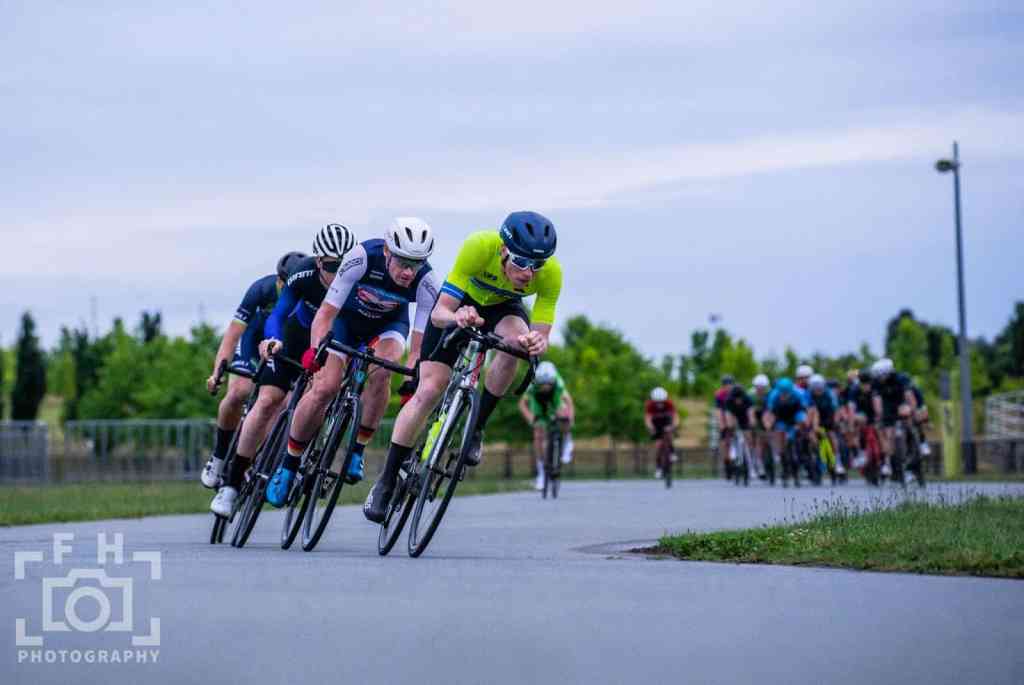
What is esports' future amidst the multiple-platform landscape, and where would you like to be positioned?
I am hesitant to predict the future. My aim is to enjoy riding and racing my bike!
What is your opinion of the new race formats being used during the Zwift Grand Prix and the World Championships?
Organizers are keen to use these new racing formats to differentiate eSports from other cycling disciplines. I think that is a reasonable goal, but my critique would be that the final product for the audience (which should be the focus) doesn’t always appear to be thought through.
I think that the focus of these events should be to appeal to two audiences:
1- indoor cyclists, particularly those who are participating in virtual racing.
2- the broader cycling community.
As each of the Zwift Grand Prix rounds and then Worlds were unique formats, audiences were only familiar with the format after watching the event. Furthermore, the committed Zwift Grand Prix viewer had to learn the structure for each round to understand what they were seeing.
For esports to appeal to the broadest audience, most top-level racing should be in a format that is more consistent and more familiar to viewers. For Zwift Grand Prix or similar, using formats that most indoor cycling racers themselves compete in is preferable. E.g., the WTRL TTT, ZRL points race, Zwift Insider tiny races, or a standard road race.
For Worlds, the format should be consistent. That would be a shame if 2024 is a radically different format to 2022 or 2023. I don’t think we have to coddle audiences, as most sports are hard to understand when you first watch, but I think the formats and rules should be consistent.

Esports has come a long way in a short time. What do you envision it will be like in five years and further into the future? What will it take to get it there?
I’m really not sure. I’d love to see growing acceptance from the broader cycling and racing community, which will primarily take time. I’m interested to see if there will be genuine competition among the different platforms, which should improve the product but could dilute racing fields. I’d love to witness the experience get increasingly immersive, both in terms of the platforms and the equipment.
Okay, I need a juicy exclusive. Tell us something about yourself that none of your fellow racers or fans know about you. Please?!?
I have a bit of a cycling shoe addiction. I think I have about ten pairs at the moment. It’s hard to notice as, on almost every ride, I wear my Giro Empire SLXs. I am a big fan of lace-up shoes for cycling.
Also, I have a shim in under my right cleat to counter a leg length imbalance, and I have a bit of a weird setup where my cleat position is slightly asymmetrical, and both cleats are pushed as far back as possible.

The floor is yours! Is there anything you would like to say?
Thanks so much for the opportunity, Chris, and kudos to you for all the work you do!
Thank you, Torben!
Anything you’d like to say to Torben?
Comment below! I’ll see what I can do.
To subscribe to the Zommunique and receive more informative and entertaining articles like this one sent directly to your inbox, click here!
Semi-retired as owner and director of his private Orthopedic Physical Therapy practice after over 20 years, Chris is blessed with the freedom to pursue his passion for virtual cycling and writing. On a continual quest to give back to his bike for all the rewarding experiences and relationships it has provided him, he created a non-profit. Chris is committed to helping others with his bike through its work and the pages of his site.
In the summer of 2022, he rode 3,900 miles from San Francisco to New York to support the charity he founded, TheDIRTDadFund. His “Gain Cave” resides on the North Fork of Long Island, where he lives with his beautiful wife and is proud of his two independent children.
You will read him promoting his passion on the pages of Cycling Weekly, Cycling News, road.cc, Zwift Insider, Endurance.biz, and Bicycling. Chris is co-host of The Virtual Velo Podcast, too!

